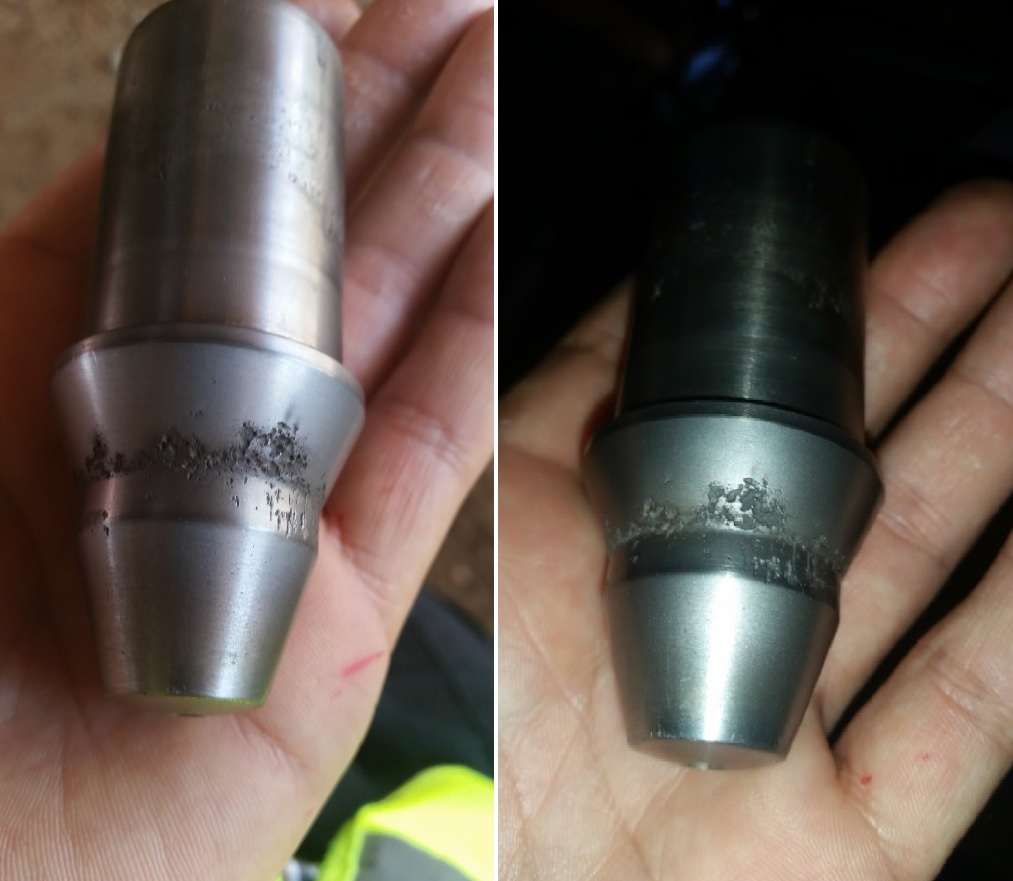Flash Steam Problems
Definition
Flash steam is a dynamic condition in which the water pressure suddenly drops below its boiling point and produces instant vaporization.
While the fluid experiences an abrupt expansion, the total enthalpy and temperature will remain the same. Most of the water molecules will absorb the excess of energy, as latent heat, and end up forming steam.
Derived Problems
The resulting flow is a predominant mixture of vapor phase with a certain water content. This combination can be very abrasive due to the continuous liquid droplets’ impingement on the surrounding area.
This phenomenon can also lead to a variety of subsequent problems, such as mechanical vibrations, high noise, wearing or material erosion. These problems potentially contribute to an irreversible failure.
In addition, if the quality of the process water is poor, the pressure reduction would bring about precipitation of chemical compounds, deposition of impurities and generate further deterioration. Refer to the following post to find extra information about this type of failure, click here.
Control Valve Failure
Valves are the most susceptible component for flash steam to occur. When a fluid passes through a control valve, the area restriction produces a significant depression and originate boiling. This thermodynamic transition forms vapor bubbles in the water that will continuously hit on the trim of control valves.
Since the volumetric flow rate must be maintained, the fluid velocity will inexorably increase and create even greater wearing effects.
Case History
For instance, in high pressure systems, superheated drain valves occasionally discharge into the low-pressure condensate flash tank. Under these conditions, the water flow normally exceeds sonic velocity and chokes at the flash steam zone. As a result, the rate of degradation accelerates exponentially.
The image shows the effects of impingement on the valve plug in a high pressure drain system. Notice the likeness in appearance to those effects that cause the presence of abrasive solids. The system did not contain any solid at all, however.
We took this photo during a startup of a power plant. Most of the high pressure drain valves were severely damaged. All of them presented the same corrosion pattern.
We managed to repair some valves and lapped the affected zone, but some other had to be inevitably replaced.
In the following link you can find other typical failures that come from flash steam and wrong designs. Cick here.
Strategies to Approach a Flashing Steam Problems
How do you solve this problem? Flashing is inherent to the process conditions. It is very important to have a deep understanding of the process operation. That will give you the perspective to foresee locations where flashing can be expected, thus, anticipate precise actions. While you cannot completely remove it, good design practices helps to prepare the system for such phenomenon and mitigate such consequences.
Material Selection
A correct material selection is critical to withstand both physical and chemical effects derived from flashing. Stellite is a cobalt base alloy (with around 30% chromium content) specially designed for wear and corrosion resistance. Though it is also suitable to perform perfectly at high temperature ranges. This material is commonly the preference for extreme service applications. In this practical case, the material of the plugs was 316SS. Did not have external cover of stellite or hardener trim shield to protect the seat surface. Despite the excellent resistant properties of 316SS, it was not enough to tolerate the conditions it was exposed to.
Relocation of Flashing - Sacrificial Plates
Another possibility to approach flashing erosion is to install a sacrificial orifice plate downstream from the valve to increase the backpressure. As a consequence, it would reduce the pressure drop across the valve and relax the service conditions. Flashing would probably still occur, but it would be relocated to the orifice plate area. In the event of a damaged orifice plate, you can easily replace them when necessary.
Internal Protections
The plug can be protected with a drilled hole cage. This devise would reduce the size of the vapor bubbles, and therefore, minimize or even eliminate flashing.
Valve Design Selection
Select a different valve design. For instantce, a multistate trim control valve or angle valves would allow to gradually dissipate the energy released during flashing. That it a positive way to control the degradation.
There is one more possible solution that entails the design of a reverse flow alignment plug which would displace the restriction area past the valve seat. This way the flashing and high velocity flows occurs right after the plug.
Conclusions
Flash steam happens when hot condensate pressure drops sharply below the vapor pressure of the liquid at that temperature. It is necessary to carry out a detailed analysis to identify any critical zone subject to experience flashing. In the event of flashing, first understand the nature of the problem, then prepare a comprehensive strategy plan according to the following strategies to control the degradation:
- Variation of process conditions to minimize or eliminate flashing
- Resistance materials to endure such conditions
- Flashing control by energy dissipation designs
- Flashing displacement by relocating the problem downstream to safer zones
- Valve Design Selection
Sometimes the best possible solution does not come from just one of the above strategies but requires the combination of several of them.


